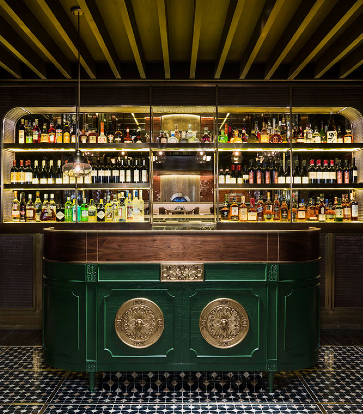The 47-year-old creative director might be known for his work with top chefs such as Hong Kong-based Italian chef Umberto Bombana and Japanese chef Hideaki Sato of Ta Vie, but not many know this little secret: Chang once worked as a dishwasher when he was 14 and, ironically, developed a phobia of washing plates.
“My mum is a very old fashioned Chinese mum. When I was 14, she marched to the clubhouse the day after my birthday, turned down an offer for me to be a busboy where I could meet other club members, and asked for a dishwasher job for me,” shares Chang with a chuckle.
Until today, his fear of washing dishes remain: “Imagine there’s an event with 100 guests. Each one eats an appetiser, three courses, with coffee and tea. Then there’s small dishes for butter, olive oil or ketchup. Each person will consume at least 30 pieces of tableware. That’s nearly 3000 pieces of tableware to go through, and they always come dirty, always come scummy.”

But Chang did take away one thing from the experience: “I learnt exactly how the dishwasher is treating my plates!”
Having gone through firsthand how quickly the cleaners have to move and maneuver over 3,000 plates, Chang recognises the importance of designing dinnerware that can withstand impact. His designs for hotels’ all-day dining restaurants are built just for this, though he keeps the more delicate pieces for fine dining establishments.
“We want to design things that echo gastronomy. Plates are just plates on their own, displayed as fragile objects; it’s very pretty, all bling bling, but there’s no energy,” says Chang.
To be sure, Chang injects life into the tableware he designs by combining his interest for art history and food. Ruyi, for instance, is a contemporary tableware range he started in 2012, which celebrates Chinese culture by delving into its culinary history. He shares an example of what studying art history reveals: “Manuscripts that clearly describe the crab roe (orange in colour) has to be served on a sky-blue plate. It shows how colour contrast maximise appetites and feeling of festivity. We pay a lot of attention to how colour and texture work in relation to plates.”

The influence of social media
Perhaps the most important factor these days, though, is how the plate will enhance a dish on social media. Chang believes this is the one area where all diners are on equal ground.
“It takes a lot of education and a sensitive palate to taste if a béarnaise is a good one—is it with egg yolk, does it have enough acidity. Social media puts everyone on an equal level when it comes to food presentation and sense of beauty,” says Chang. He continues: “Everyone who dines out wants to have a good time and feel important.”
A plate, he believes, is also the one object in a restaurant that needs to be perfect. “Tableware demands your attention because it is in front of you for at least 10 minutes; you can’t fool anyone. The guest has enough time to look at the plate and spot any flaws,” he says.
The trick to consistency: A lot of quality control. “There’s no short cut, no rocket science to it,” says Chang.















